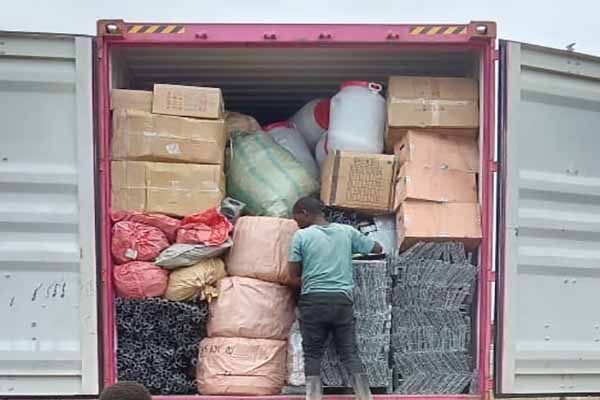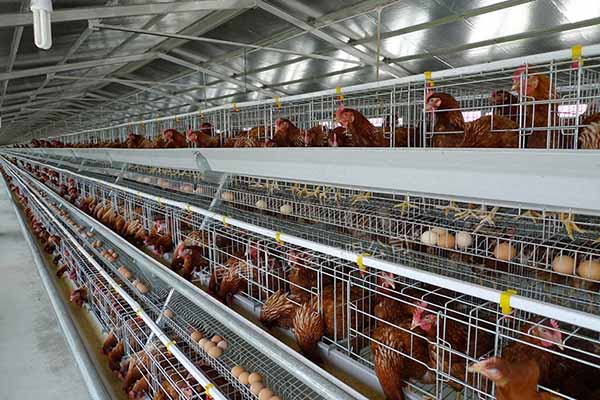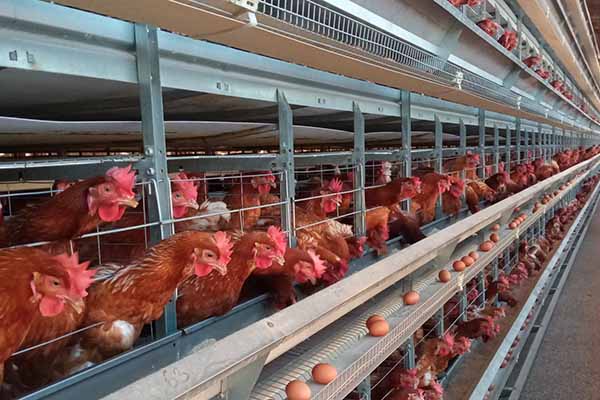Compliance of Automated Equipment for Kenyan Chicken Farms: Ensuring Efficiency and Quality
Time : 2025-06-29
Kenya’s poultry industry has been experiencing significant growth, with an increasing number of chicken farms emerging across the country. This surge in the industry has led to a growing demand for efficient and automated equipment to enhance productivity and ensure compliance with international standards. This article delves into the compliance aspects of automated equipment for Kenyan chicken farms, focusing on key considerations and best practices to maintain operational excellence.
Introduction to Automated Equipment in Chicken Farms
Automated equipment has become an integral part of modern chicken farming. These systems can manage various farm operations, including feeding, watering, monitoring health, and egg collection. The integration of automated technologies not only improves efficiency but also contributes to the overall compliance with international standards set forth by organizations such as the World Organisation for Animal Health (OIE) and the Food and Agriculture Organization (FAO).

Key Compliance Aspects for Automated Equipment
1. Design and Construction Standards
The design and construction of automated equipment must adhere to strict standards to ensure the safety and well-being of the chickens. Kenyan chicken farms should ensure that their equipment complies with local regulations as well as international standards such as the OIE and FAO guidelines. This includes the use of materials that are non-toxic and safe for the birds, as well as structures that provide adequate space and ventilation.
2. Food Safety and Hygiene
Food safety is a critical concern in the poultry industry. Automated feeding systems must be designed to prevent cross-contamination and ensure that the feed is delivered in a clean and safe manner. This includes the use of stainless steel components and regular cleaning protocols to maintain hygiene standards. Compliance with these standards not only protects the chickens but also ensures the quality of the end product, which is essential for marketability.
3. Environmental Controls
Automated systems should be equipped with environmental controls to maintain optimal conditions for the chickens. This includes temperature regulation, humidity control, and air quality management. Compliance with these parameters not only contributes to the health a nd productivity of the birds but also ensures that the farm meets environmental regulations and reduces the risk of disease outbreaks.
nd productivity of the birds but also ensures that the farm meets environmental regulations and reduces the risk of disease outbreaks.
4. Energy Efficiency
Energy efficiency is another crucial aspect of compliance for automated equipment. Kenyan chicken farms should invest in energy-efficient technologies to reduce operational costs and minimize their environmental footprint. This could involve the use of renewable energy sources, smart energy management systems, and energy-saving features in the equipment itself.
5. Data Management and Monitoring
Automated systems generate vast amounts of data, which can be used to monitor farm performance and make informed decisions. Compliance with data management standards is essential to ensure the integrity and security of this information. Farms should implement robust data protection measures and adhere to guidelines for data storage, processing, and sharing.
Best Practices for Ensuring Compliance
1. Regular Inspections and Maintenance
Regular inspections and maintenance of automated equipment are essential to ensure compliance. Farms should establish a comprehensive maintenance schedule and conduct regular checks to identify and address any issues promptly. This proactive approach helps to prevent downtime and maintain the integrity of the farm’s operations.
2. Staff Training
<p(Employee) training is crucial for ensuring that automated equipment is operated and maintained correctly. Kenyan chicken farms should invest in training programs for their staff to ensure they are proficient in handling the equipment and understanding compliance requirements. This includes training on safety protocols, operational procedures, and troubleshooting techniques.
3. Documentation and Record Keeping
Documentation and record keeping are vital for compliance. Farms should maintain detailed records of equipment specifications, maintenance schedules, and any modifications made to the system. This documentation is not only important for regulatory compliance but also for troubleshooting and continuous improvement.
4. Collaboration with Equipment Suppliers
Collaborating with equipment suppliers can provide valuable insights into compliance requirements and best practices. Suppliers can offer guidance on selecting the right equipment, integrating systems, and ensuring ongoing compliance. Establishing strong relationships with suppliers can also lead to better support and troubleshooting when issues arise.
Conclusion
Compliance with automated equipment standards is essential for Kenyan chicken farms to maintain operational excellence and meet international market demands. By adhering to design and construction standards, ensuring food safety and hygiene, managing the environment effectively, focusing on energy efficiency, and implementing robust data management practic es, farms can enhance their productivity, reduce risks, and contribute to the growth and development of the poultry industry in Kenya.
es, farms can enhance their productivity, reduce risks, and contribute to the growth and development of the poultry industry in Kenya.











